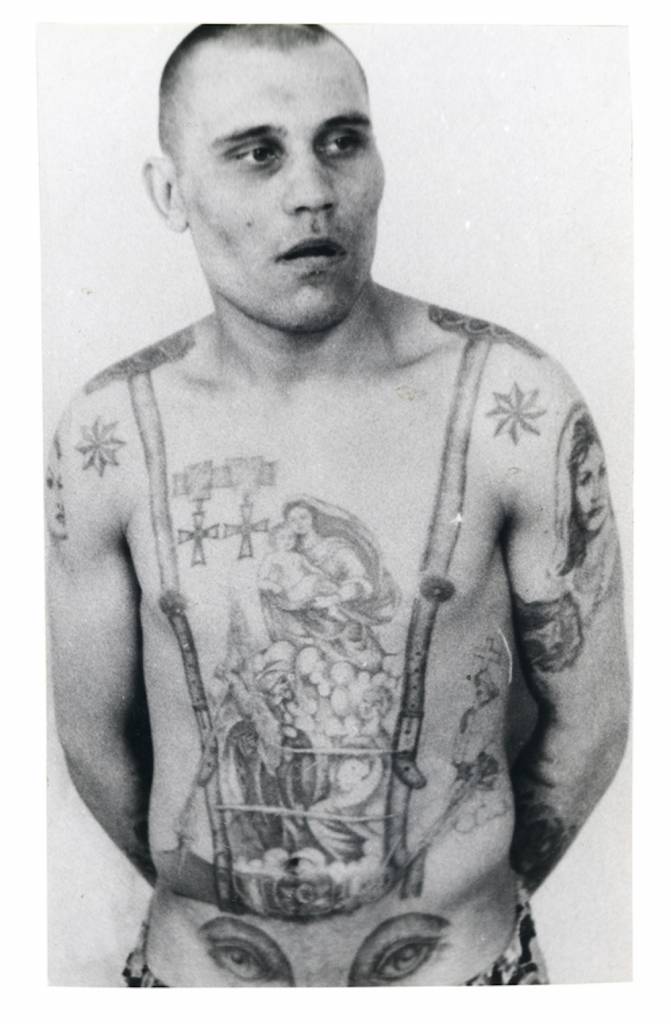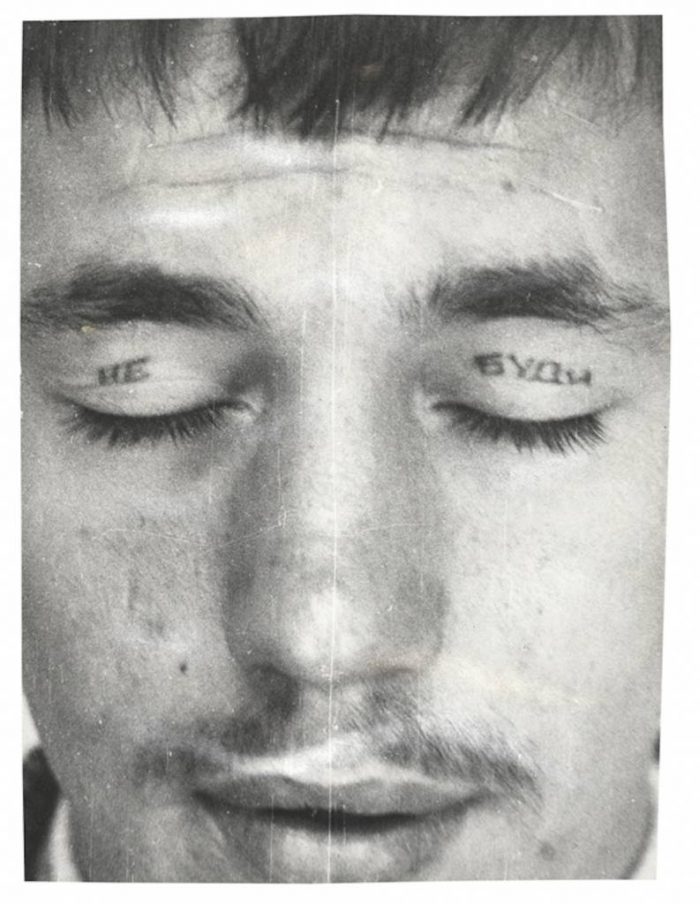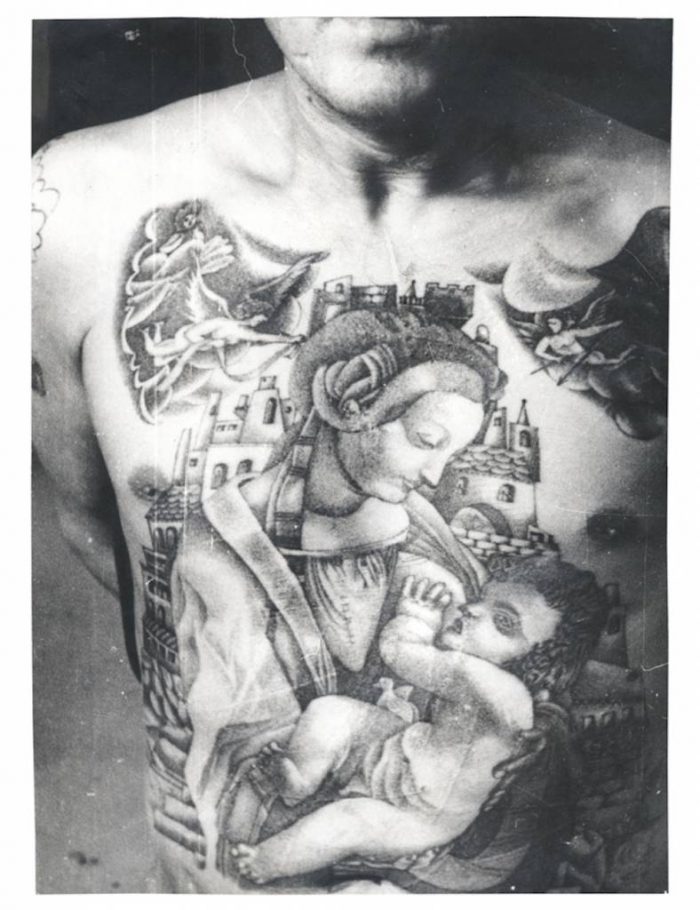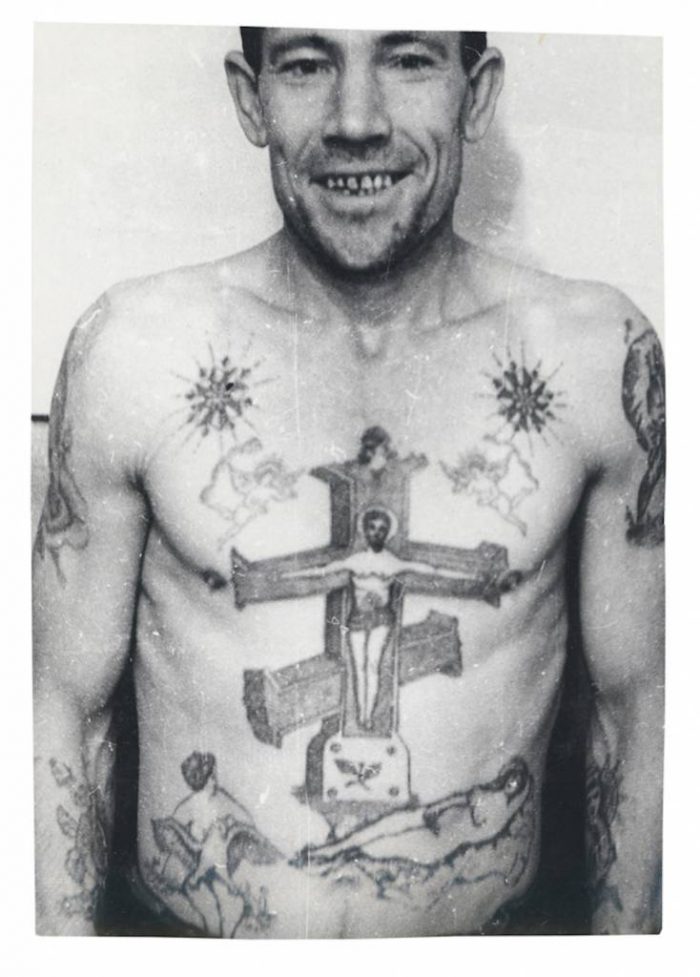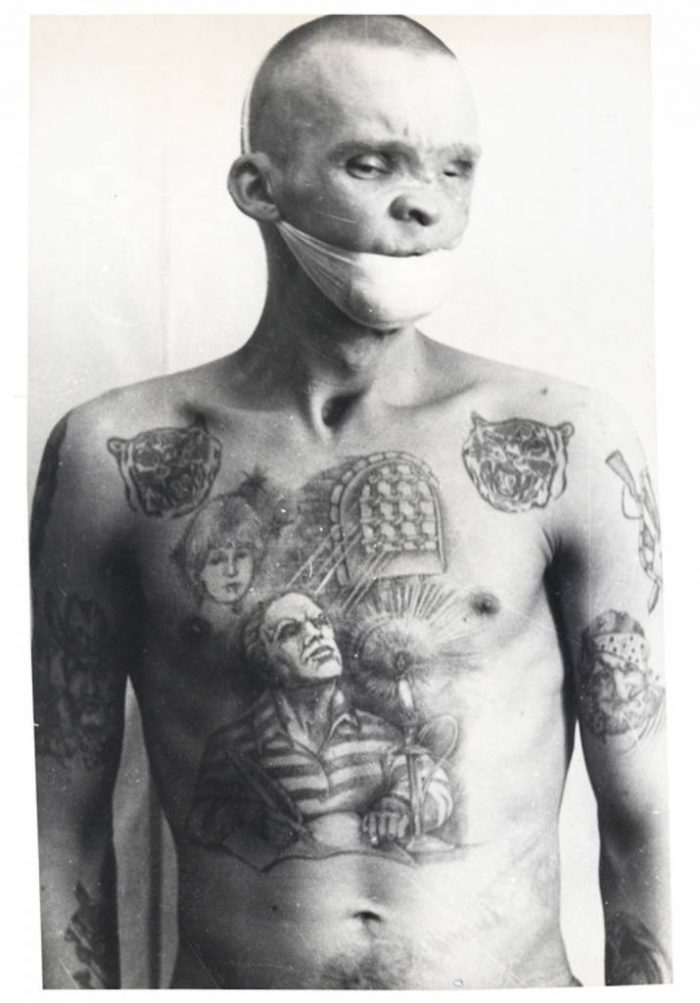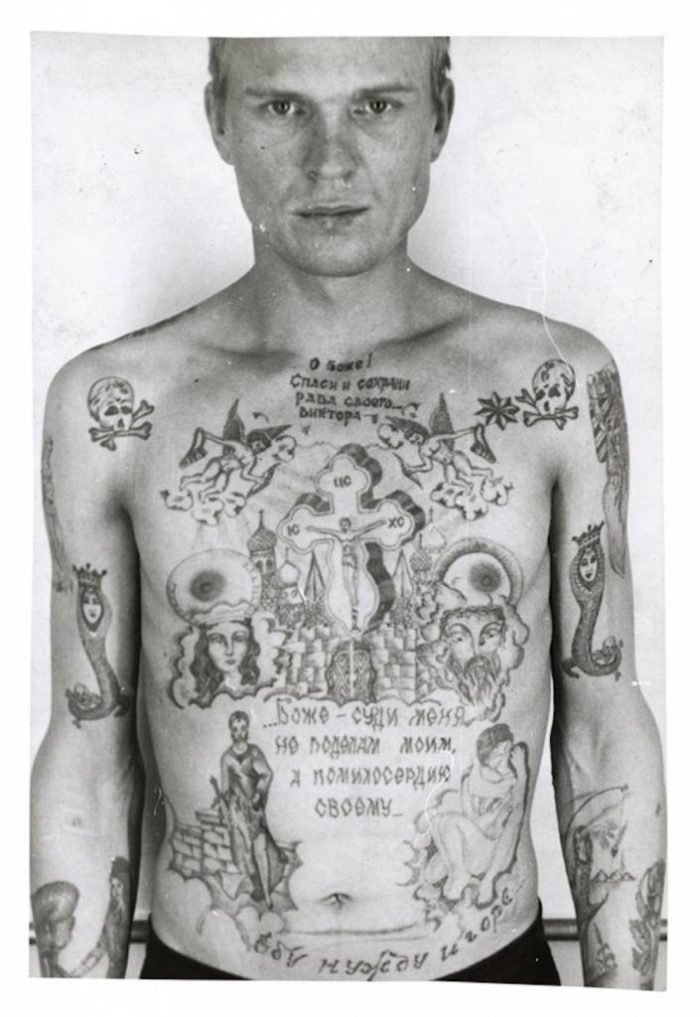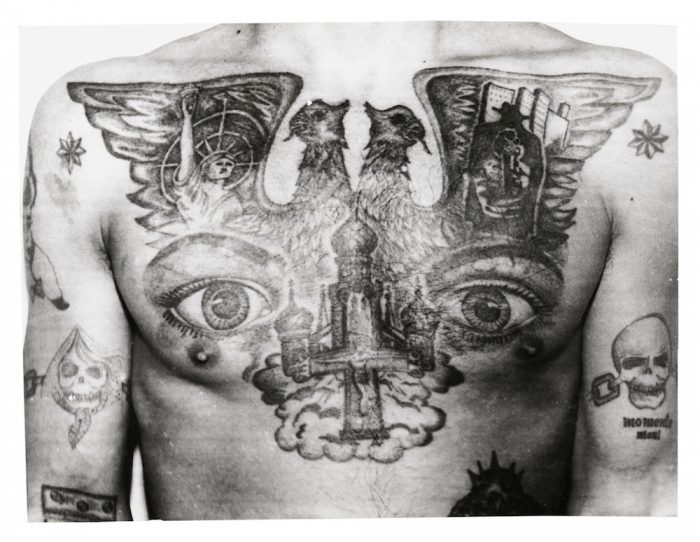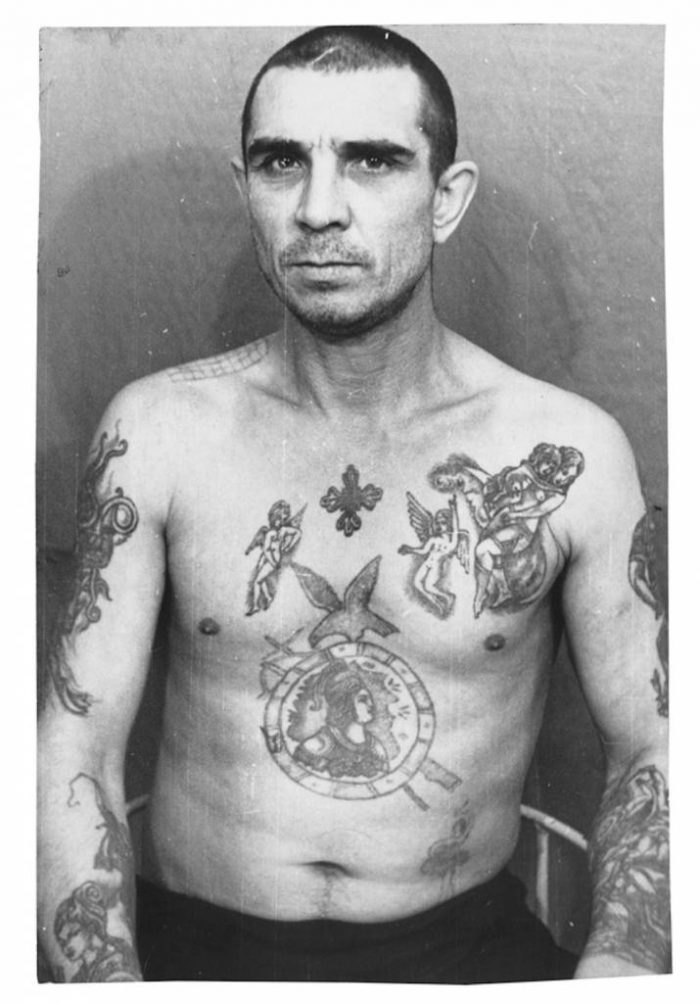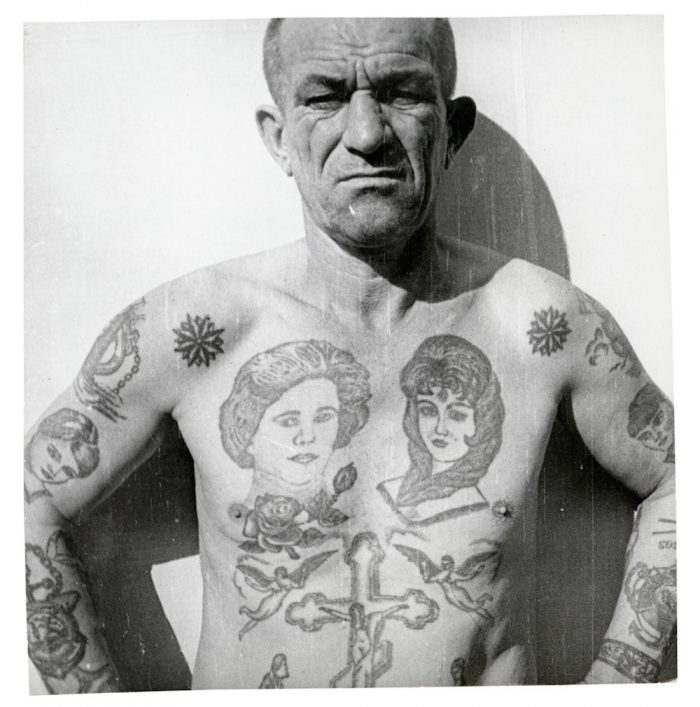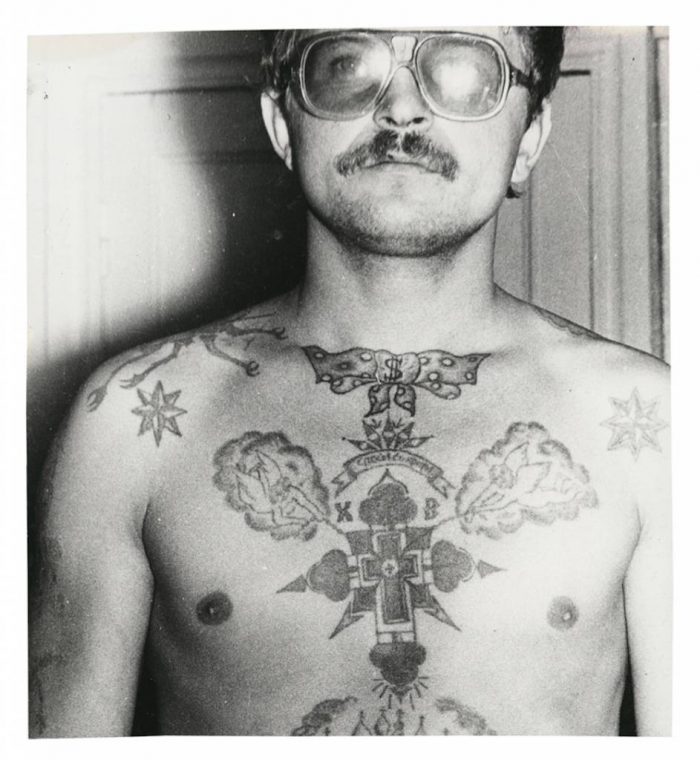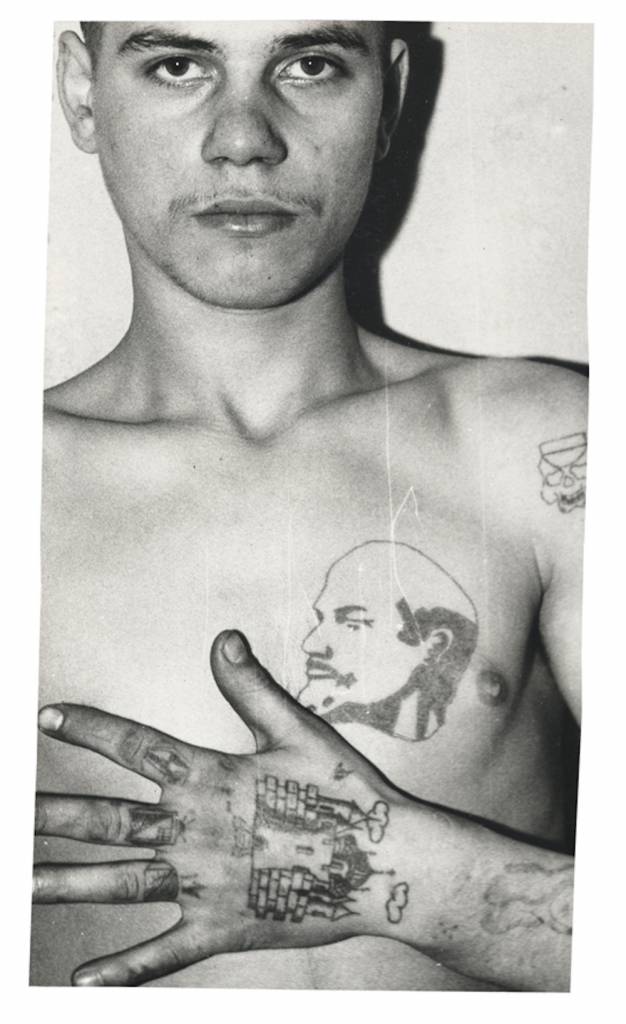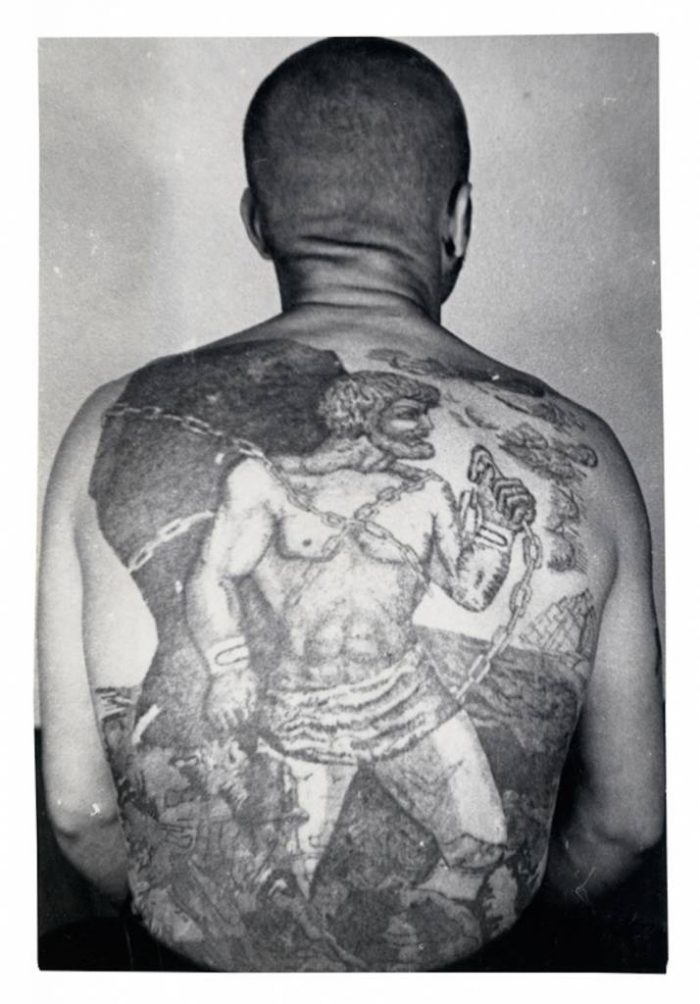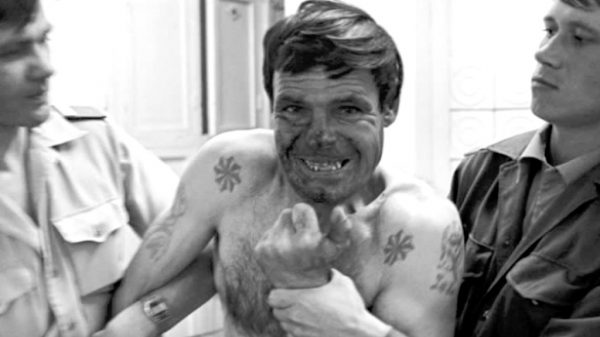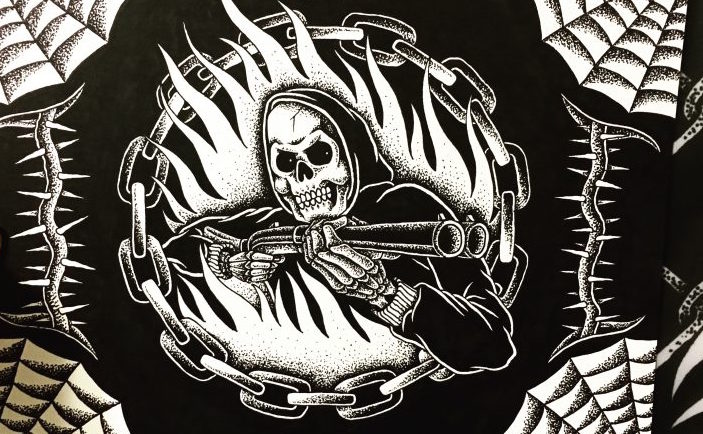Russian prison tattoos are a portal into a dark world, one that is really only understood by the people that exist within it. From an outsider’s perspective, the aesthetic of these tattoos have always intrigued me. The symbolism that this ink carries goes so deep into the underworld that it will never fully be understood. Knives, Women, Spider Webs, Guns, Churches and other Russian icons all mean something different when they are put onto the body of a Russian criminal. In no way am I glorifying any of their acts of violence, but I enjoy looking at the decorated skin of humans that exist on the fringe! The person who made it his life mission to catalog the meaning behind Russian Underworld tattoo art was Arkady Bronnikov, the senior expert in criminalistics at the USSR Ministry of Internal Affairs for over 30 years., and you can pick up a book of these photos and more of his insights called Russian Criminal Tattoo Police Files. Now read below as Bronnikov decodes these tattoos from the Russian underworld!
All images via Fuel
 A snake around the neck is a sign of drug addiction. Most inmates are either alcoholics or substance abusers. Their crimes are often committed while in a state of intoxication. The stars on the clavicles and epaulettes on the shoulders show that this inmate is an authority. The trousers worn by the inmate are part of the uniform of a special regime colony, the strictest type of regime in the Soviet Union. Criminals sent here are known as osobo opasnim retsidivistom (especially dangerous recidivists), who have carried out grave offences such as murder or paedophilia. They are assigned to harsher and more restricted regimes of detention than other prisoners, and are not subject to be released on parole.
A snake around the neck is a sign of drug addiction. Most inmates are either alcoholics or substance abusers. Their crimes are often committed while in a state of intoxication. The stars on the clavicles and epaulettes on the shoulders show that this inmate is an authority. The trousers worn by the inmate are part of the uniform of a special regime colony, the strictest type of regime in the Soviet Union. Criminals sent here are known as osobo opasnim retsidivistom (especially dangerous recidivists), who have carried out grave offences such as murder or paedophilia. They are assigned to harsher and more restricted regimes of detention than other prisoners, and are not subject to be released on parole.
© Arkady Bronnikov / FUEL.
The stars on the shoulders show that this inmate is a criminal ‘authority’. The medals are awards that existed before the Revolution and as such are a sign of antagonism and defiance towards the Soviet regime. The eyes on the stomach denote a homosexual (the penis makes the ‘nose’ of the face).
© Arkady Bronnikov / FUEL
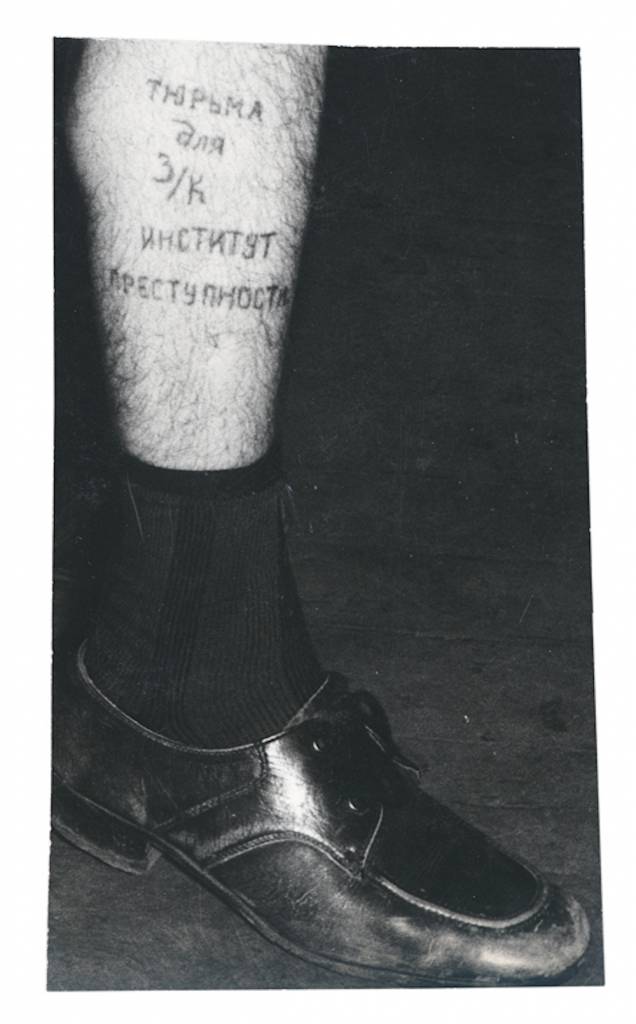 Text on the leg reads ‘Prison for a zek is a university of crime’.
Text on the leg reads ‘Prison for a zek is a university of crime’.
This tattoo means that an ordinary person who is sentenced for a minor offence will inevitably improve his criminal skills in prison, as professional criminals share their experience. For example, pickpockets reveal how to make sure the victim feels nothing as their pockets are emptied of valuables. Even if a person has committed a crime in error, when he leaves prison he will be more likely and able to commit crimes purposefully and professionally. The reality is that penal institutions don’t correct inmates, even though they were once called ‘Correctional Labour Institutions’. Today they are known as ‘Institutions for the Execution of Sentences’, so they are no longer required to deal with the problem of correction.
© Arkady Bronnikov / FUEL
Text across the eyelids reads ‘DON’T / WAKE’.
Eye tattoos are made by inserting a metal spoon under the eyelid so that the ‘needle’ doesn’t pierce the eye.
© Arkady Bronnikov / FUEL
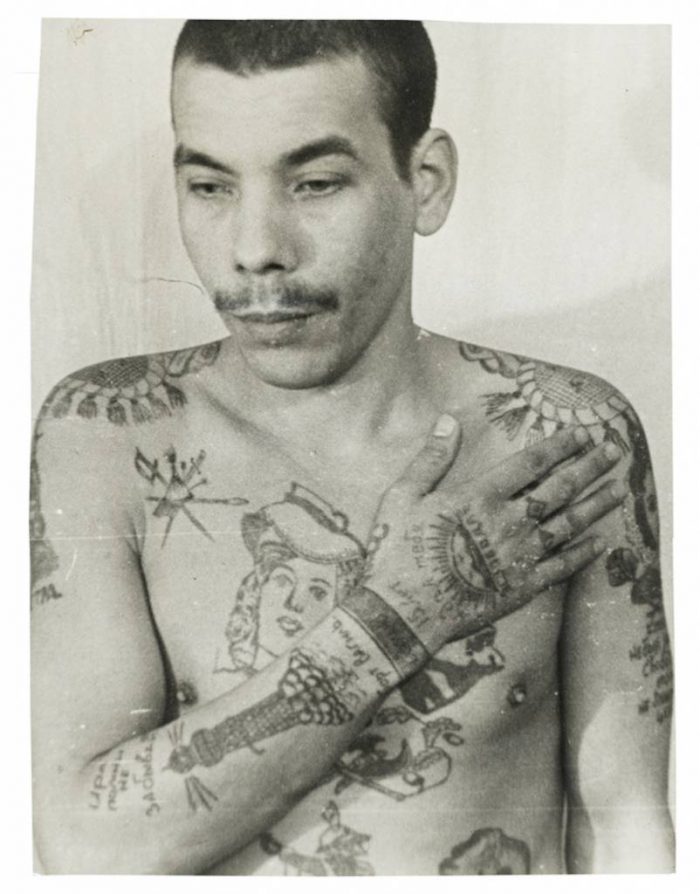 Text on the arm reads ‘Remember me, don’t forget me’ and ‘I waited 15 years for you’.
Text on the arm reads ‘Remember me, don’t forget me’ and ‘I waited 15 years for you’.
This man is a Muslim. On his stomach (left) is a religious building with a crescent moon; his features also indicate that he is not Russian. He is not an authoritative thief, but has tried to imitate them with his tattoos to increase his standing within the prison. The lighthouse on his right arm denotes a pursuit of freedom. Each wrist manacle indicates a sentence of more than five years in prison.
© Arkady Bronnikov / FUEL
The Madonna and Child is a thieves’ talisman, acting as a guardian from misfortune and misery. It also means that the bearer has been a thief from an early age: ‘Prison is my home’; ‘A child of prison’.
© Arkady Bronnikov / FUEL
This prisoner is a victim of syphilis and has suffered severe scarring to his face, eyes and mouth. In the prisons and colonies male or female prisoners suffering from venereal diseases (such as syphilis) are known as buketniki (bouquet holders). They are also nicknamed after army ranks, depending on how advanced their condition is, for example, ‘Kolka whored around without taking any precautions; yesterday the medic told me that he was already a “lieutenant”.’ (An inmate suffering from second-stage syphilis is known as a ‘colonel’, third-stage a ‘general’). There are cases where people have contracted syphilis, AIDS and tetanus while having tattoos made under insanitary prison conditions. Tattooing is forbidden in the prisons and camps. Prosecuted and punished severely by the authorities, the practice has acquired more status as it is pushed underground.
© Arkady Bronnikov / FUEL
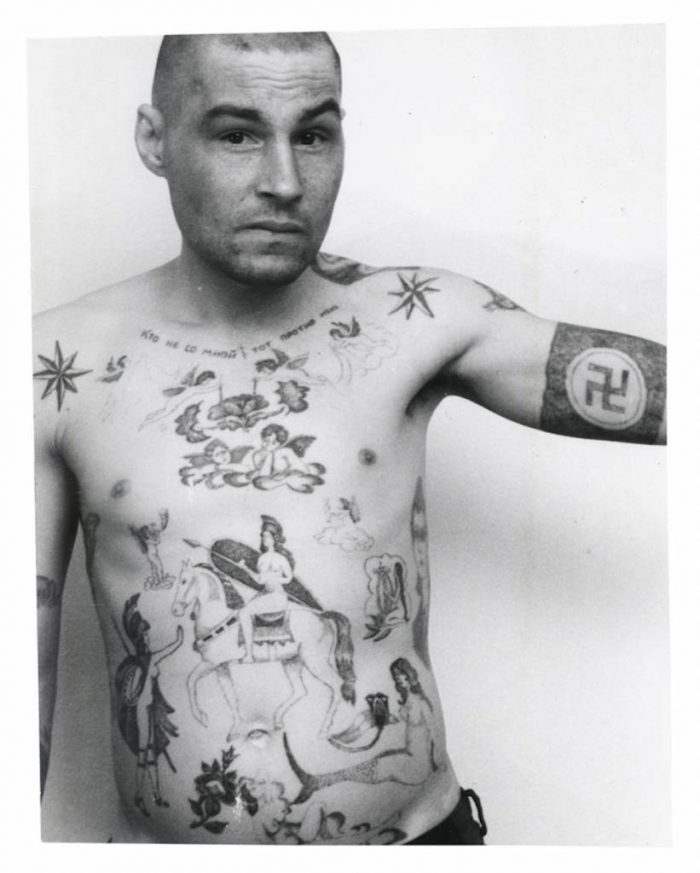 Text across the chest reads ‘He who is not with me is against me’.
Text across the chest reads ‘He who is not with me is against me’.
The swastika and Nazi symbols may mean that the owner has fascist sympathies, though they are more usually made as a protest and display of aggression towards the prison or camp administration. During the Soviet period the authorities often removed these tattoos by force either surgically or by using an etching method. A tattoo of a mermaid can indicate a sentence for rape of a minor, or child molestation. In prison jargon the nickname for a person who commits this type of crime is amurik meaning ‘cupid’, lohmatii ‘shaggy’, or a universal ‘all rounder’. They are ‘lowered’ in status by being forcibly sodomised by other prisoners, sometimes in groups.
© Arkady Bronnikov / FUEL
Text above the cross reads ‘O Lord, Save and Protect your servant Viktor’, text beneath reads ‘God do not judge me by my deeds but by your mercy’. Text above the waist reads ‘I fuck poverty and misfortune’.
The skull and crossbones show that the prisoner is serving a life term. The single eight-pointed star denotes that he is a ‘semi-authority’ among thieves. The girl ‘catching’ her dress with a fishing line on his left forearm is a tattoo worn by hooligans and rapists. The snake coiled around human remains (positioned on the middle third of each arm) is a variation on an old thieves’ tattoo. The snake is a symbol of temptation; here the snake’s head has been replaced by that of a woman: the temptress. Tattooed on the right side of the stomach is a version of Judith (1504) as painted by Giorgione: this is intended as a symbol of a scheming, seductive woman who betrays a noble man.
© Arkady Bronnikov / FUEL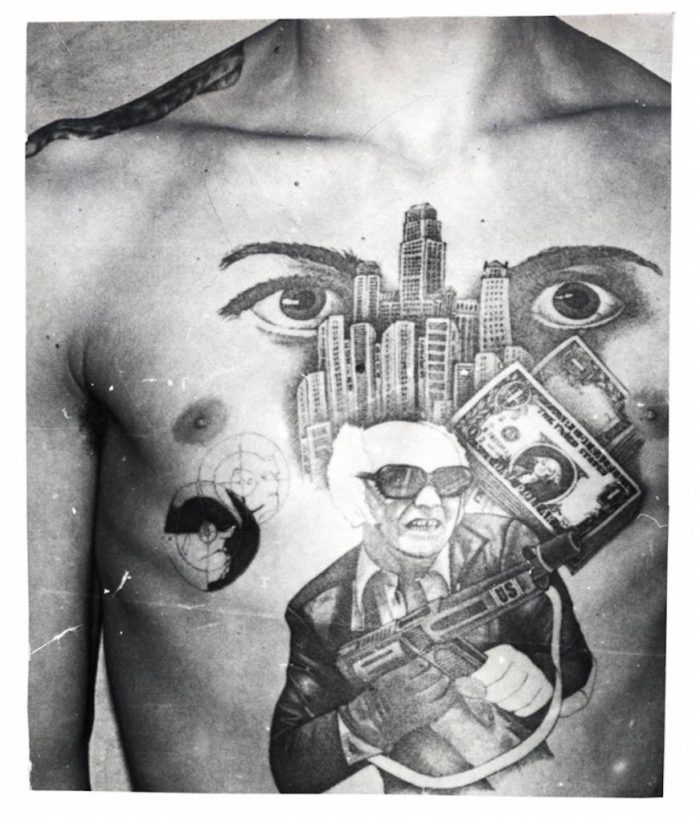 The man in this tattoo is a character from a TV crime series shown during the Soviet era – a brutal gang leader. In the story, he ends up in jail. In this tattoo, however, he defends himself against the Soviet power and fights back. On his submachine gun are the letters ‘US’ which along with the skyscrapers and dollar bills embody the ideological opponents of the Soviet Union and indicate a hatred of the government.
The man in this tattoo is a character from a TV crime series shown during the Soviet era – a brutal gang leader. In the story, he ends up in jail. In this tattoo, however, he defends himself against the Soviet power and fights back. On his submachine gun are the letters ‘US’ which along with the skyscrapers and dollar bills embody the ideological opponents of the Soviet Union and indicate a hatred of the government.
The eyes signify that ‘I am watching over you’ (the other inmates in the prison or camp). The epaulette tattooed on the shoulder denotes the inmates ‘rank’ among the criminal caste.
© Arkady Bronnikov / FUEL
The tattoos on this inmate mimic those of higher-ranking criminals and indicate he has adopted a thieves’ mentality. However, he does not wear the ‘thieves’ stars’, he is not a vor v zakone (thief-in-law) and therefore holds no real power among this caste.
© Arkady Bronnikov / FUEL
The stars on the shoulders denote an authoritative thief. The rose on the chest means he turned eighteen while in prison. The acronym ‘SOS’ on the right forearm variously stands for Spasite Ot Syda (Save me from judgment); Spasayus Ot Suk (I saved myself from the bitches)*; Spasayus Ot Sifilisa (Saved from syphilis); Spasi, Otets, Syna (Save me, father, your son); Suki Otnyali Svobodu (Bitches robbed my freedom).
© Arkady Bronnikov / FUEL
ext on the chest reads ‘Save and protect’. Text either side of the cross reads ‘XV’ Hristos Voskres (Christ has Risen).
The eight-pointed stars on the clavicles denote a high-ranking thief. A bow tie tattooed on the neck is often found in strict regime colonies. Originally bow ties were a dishonourable tattoo. They were forcibly applied underneath the clavicle cat tattoos of pickpockets who had broken the ‘thieves’ code’ and sided with the authorities. Today, however, there is no stigma attached to them. The dollar sign on the bow tie shows the bearer is either a safecracker, money launderer or has been convicted for the theft of state property.
© Arkady Bronnikov / FUEL
Lenin is held by many criminals to be the chief pakhan (boss) of the Communist Party. The letters BOP, which are sometimes tattooed under his image, carry a double meaning. The acronym stands for ‘Leader of the October Revolution’ but also spells the Russian word VOR (thief). Often tattoos with portraits of Lenin and Stalin are intended to show patriotic feelings. However, some prisoners had portraits of Lenin and Stalin tattooed on their chest for ‘protection’, as it was commonly believed that the guards were forbidden to shoot at an image of their great leaders.
© Arkady Bronnikov / FUEL
This tattoo is a variation on the myth of Pometheus who, after tricking Zeus, is chained to a rock in eternal punishment. The sailing ship with white sails means the bearer does not engage in normal work, he is a travelling thief who is prone to escape.
© Arkady Bronnikov / FUEL


